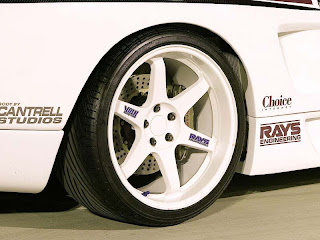The Ford Mustang was initially created in 1964 in a plant in Dearborn, Michigan and first introduce in the New You are able to World’s Fair that same year. As time continued its history could be split into four periods cleverly known as decades one through five.The very first generation survived until around 1973 and also the vehicle was mainly designed around the thought of the Ford Falcon, an early on vehicle. In 1974 the 2nd generation started also it survived for around 4 years until 1978. It had been designed round the Ford Pinto plus some of their enhancements incorporated rack and pinion steering along with a new frame that deliver to a quieter and softer ride. The 3rd generation of mustangs survived from 1979 to 1993, substantially longer the prior two decades. The brand new options that come with this generation incorporated more trunk space along with a completely remodeled interior that permitted for that seating as high as four people. The convertible seemed to be introduced and grew to become popular at this time around.The 4th generation of mustangs began in 1994 to 2004. At this time around the mustang was completely remodeled and typically the most popular models were outfitted with slightly bigger engines. Even the convertible aspect started to vanish from production throughout this era. The 5th generation of mustangs began in 2005 and continues today. It had been remodeled again at this time around and it is style grew to become more like the mustangs from the sixties instead of individuals from the third and 4th generation. Its engine seemed to be bigger compared to previous decades of Ford Mustang. That’s virtually all the fundamental details about the ford mustang.
For the lovers of American cars must have memorized the correct style with this one car. This car is a genuine product of the United States. And he is a Ford Mustang. These vehicles not only have fans in the U.S. alone but all over the world was still the idol. Also not spared in the white continent, Europe.
By looking at the Mustang 5.0 GT fans in Europe are still high, a home workshop in the country tuning and modification of Hitler, Germany, named Design World, presenting a package of modifications that can enhance the look and performance of this car bearing a galloping horse.
For the exterior, the tuner uses bright colors for their projects. In this case, polish Mustang World Design by playing the two-color scheme, which dominates the orange and black graphics and games press in the side of the body.
While on the inside of the cabin is not too much changed. Design World only give an orange color accents in places like the steering wheel and dashboard and audio cover.
Modified Ford Mustang GT 5.0 Gahar Appearing increasingly fierce drive because it has been equipped with H & R sport suspension backed chrome alloy wheels measuring 20 inches. To complete wheels wrapped in tires size 225/35 ZR20 front and 285/30 ZR20 at the rear.
While racing to the kitchen thinking about the Design World to boost energy weapons such as a revised ECU and a sport air filter can boost engine power 5.0-liter V8 from 412 hp to 435 hp. Do you want to dress you for the Mazda RX8 Mustang Production Stop or want to compete with Nissan Skyline Shown Garang ..?
As reported by Autocar, Design World peg which they handed her the package worth 12 150 Euros or about Rp147 million. A dynamic pricing pilaihan Modified Ford Mustang to Appear Gahar.
By looking at the Mustang 5.0 GT fans in Europe are still high, a home workshop in the country tuning and modification of Hitler, Germany, named Design World, presenting a package of modifications that can enhance the look and performance of this car bearing a galloping horse.
For the exterior, the tuner uses bright colors for their projects. In this case, polish Mustang World Design by playing the two-color scheme, which dominates the orange and black graphics and games press in the side of the body.
While on the inside of the cabin is not too much changed. Design World only give an orange color accents in places like the steering wheel and dashboard and audio cover.
Modified Ford Mustang GT 5.0 Gahar Appearing increasingly fierce drive because it has been equipped with H & R sport suspension backed chrome alloy wheels measuring 20 inches. To complete wheels wrapped in tires size 225/35 ZR20 front and 285/30 ZR20 at the rear.
While racing to the kitchen thinking about the Design World to boost energy weapons such as a revised ECU and a sport air filter can boost engine power 5.0-liter V8 from 412 hp to 435 hp. Do you want to dress you for the Mazda RX8 Mustang Production Stop or want to compete with Nissan Skyline Shown Garang ..?
As reported by Autocar, Design World peg which they handed her the package worth 12 150 Euros or about Rp147 million. A dynamic pricing pilaihan Modified Ford Mustang to Appear Gahar.
This site is owned and run by a Ford Mustang enthusiast out of the Motor City, Detroit Michigan. You can find both Mustang cars, parts, and a ton of accessories on sale on this auto site. And from time to time this site is updated with the latest Ford Mustang news.



























































